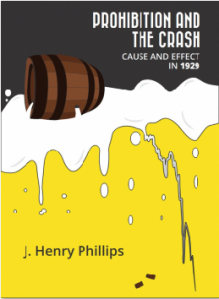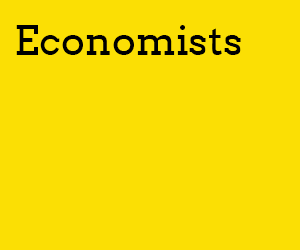Ambushing Germany, February 1931
A most important event in February 1931 was Hitler’s visit with his personal banker at Merck Finck & Co (link) August von Finck(link) on the third, to raise 13 billion Reichsmarks ($3billion, that much in $20 gold coins weighed 307,328 kilos) for the National Socialist party campaign. Why?
Over in Geneva, League of Nations cartel experts had been meeting since 1920, all the while demanding Germany make regular payments in restitution for damage done to “Allied” (U.S. not included) nations AND ban a bunch of drugs. Versailles Treaty Article 23 read the same as League of Nations Charter Article 23, which repeated the 1912 Hague Convention demands that Germany produce less morphine and cocaine. By the first week of 1929, these prohibitionist demands had jelled into U.S.-backed plans to cause every country in the world to enter into a combination to limit production to whatever governments said was the right amount. Of course they would have to divide that market fairly… That advisory resolution was accepted by the League in the first week of September 1929, the week the US stock market changed from increasing to decreasing. 1931, like 1930, was a Deep Depression year in the USA, Britain, Canada, France, The Netherlands–everywhere that had in the past bought and sold drugs without compulsion. Germans understood this new wave of hysteria as another Hague Opium Convention attack on German markets and sovereignty, and could make an educated guess as to where it was headed. Already profits were down in ALL mom ‘n Pop drugstores throughout Germany, according to the NY Times.
The Blacklist. One A.E. Sirks, a Rotterdam police chief credited with shrill Reefer Madness and Cocaine Fiends articles in 1930 was now demanding a “black list” identifying corporations insufficiently zealous toward prohibitionism.(link) That same February 2, the NY Times bristled with articles about Bank of United States financial troubles, suspicious and frozen accounts, reports naming judges, politicians and dead racketeers. The bank examiners’ 1000-page report named names like Hearst, Smith, Zigfeld, Morrow, Tumulty, the Soviet Amtorg Corporation–with Judge Manton alone endorsing some $200,000 in BUS notes in this searching investigation of that big bank’s failure. No paper then or now mentions the interception of half a ton of morphine in NY at the time of the BUS failure. The League of Nations Blacklist idea was not mentioned in any newspapers. The 03FEB NY Times reported a flurry of narcotics raids in Chinatown, and the 11FEB1931 edition reported yet another law against smuggling “narcotics.” But the flurry was over because the 24 public and 2 private League of Nations Opium Advisory Committee meetings begun January 9th, ended February 2nd, with its report handed over to the Council of the League of Nations in Geneva, scheduled to convene 16-30MAR1931. President Herbert Hoover had January 21st asked Congress for an appropriation of $35,000 to cover American participation expenses in Geneva. Plans had clearly been made.
On 19FEB1931 the Chicago Tribune reported President Hoover had signed a bill to provide for deportation of aliens convicted and sentenced for violation of narcotic laws. The following day Hoover’s message to the World Conference on Narcotic Education read: I deeply sympathize with organizations working to bring about international agreements for limiting the manufacture of narcotic drugs and to energize the police power of the several states of the Union to destroy illicit traffic in narcotics. This associated convicted foreigners with undefined “narcotic” drugs in the collective mind of the Great Unwashed. Then again, foreigners had for over a decade so associated the USA with standardized puritanical bigotry as to goad U.S. Ambassador Walter Edge in Paris into leaping to America’s cultural defense that February. Still, deep trouble was brewing. Civil war raged in Peru and 40,000 jobless demonstrators protested in Germany, several dying. Turkey reacted to pressure by instituting “drastic measures” there to prevent dope exports to the U.S.–measures that coincided with a national currency crisis. This lull would end in March. *-*-*
Good Reading: Manias, Panics, and Crashes: A History of Financial Crises by Charles P. Kindleberger(link) The original struck me as so exploitatively overpriced that I instead invested in a translation–to incidentally help me with my blog in Portuguese.(link) Already I am convinced my first impression was wrong. Of the dozens of writers explaining away the Crash and Depression, only Peter Temin, Tobias Straumann and Herbert Hoover convinced me they understood correctly… but were consciously lying–by omission or outright. Kindleberger, on the other hand, has in early chapters avoided the usual arm-waving or socialist sermonizing to which one quickly becomes inured in this field. Rather than sidestep taboo subjects, Kindleberger searches everywhere for odd and poorly-understood panics, crashes, depressions, recessions and calamities–many of which were entirely new to me. His approach is skeptical; he contrasts bad explanations so that the weakesses in one call into relief the problems with another.
Find out the juicy details behind the mother of all economic collapses. Prohibition and The Crash–Cause and Effect in 1929 is available in two languages on Amazon Kindle, as cheap as a pint of craft beer.

Brazilian Sci-fi from 1926 featuring the Hollywood-style beautiful daughter of a scientist touting prohibition and racial collectivism in America’s Black President 2228 by Monteiro Lobato, translated by J Henry Phillips (link)

Brazilian blog… Expatriotas
American blog… Libertariantranslator, with contact form

Find out the juicy details behind the mother of all economic collapses. Prohibition and The Crash–Cause and Effect in 1929 is available in two languages on Amazon Kindle, as cheap as a pint of craft beer.

Brazilian Sci-fi from 1926 featuring the Hollywood-style beautiful daughter of a scientist touting prohibition and racial collectivism in America’s Black President 2228 by Monteiro Lobato, translated by J Henry Phillips (link)

Brazilian blog… Expatriotas
American blog… Libertariantranslator, with contact form






Comments
Post a Comment